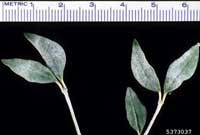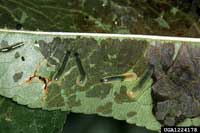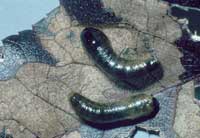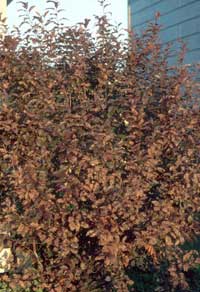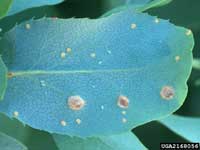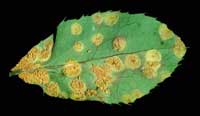Extension > Garden > Diagnose a problem > What's wrong with my plant? > Deciduous > Barberry > Spot or blotches on leaves
Barberry > Leaves > Spot or blotches on leaves
1 of 3
Powdery Mildew
Erysiphe pulchra and Phyllactina guttata
- White spots or blotches on leaves
- In severe cases leaves may be completely coated with white powdery fungal growth
- Leaves may be stunted, reddened, scorched and curled or puckered by midseason
- More common on yellow leaved species
- More information on Powdery Mildew
2 of 3
Pear sawfly (pearslug)
Caliroa cerasi
- Larvae feed on upper surface of leaf between the veins, "windowpaning" the leaf as they feed
- Damaged leaves often have a grayish appearance before turning brown
- Leaves may drop prematurely
- Larvae normally feed about 4 weeks beginning in June; a second generation can start in August
- Larvae are ½ inch long, shiny, slug-like, and are normally dark olive in color.
- More information on Pear sawfly
3 of 3
Stem rust
Puccinia graminis
- Yellow to orange spots that exude sticky honeydew on upper leaf surface in spring
- Pale orange cup-shaped structures form on underside of leaf below leaf spots and produce powdery orange-yellow colored spores
- Most common on common barberry (Berberis vulgaris)
- Japanese barberry (Berberis thunbergii) is resistant to the disease.





